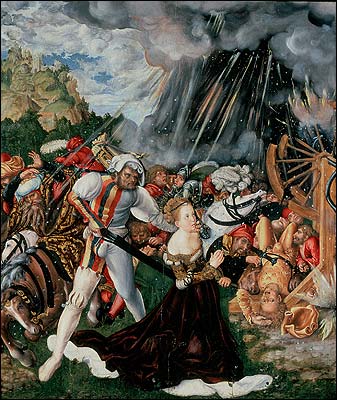Recent London exhibitions of Lucas Cranach call to mind old jokes about the buses. You wait five centuries, then two come along at once. Last summer the Courtauld Institute brought together some of Cranach’s finest religious and mythological paintings, in the first serious exhibition of his work ever staged in this country. Now, within less than six months, the Royal Academy has put on its own exhibition of the German Renaissance master’s work, in its Sackler Wing Galleries. The timing is undeniably odd, but this is hardly a case of overkill. The pictures are mostly different, and whereas the Courtauld had focussed principally on Cranach’s later productions, the Royal Academy follows him all the way through his long and prolific career – and demonstrates, with particular force, just what an exceptional, idiosyncratic painter he was in his youth.
An exact contemporary of the celebrated Albrecht Durer, the young Cranach set out to prove that anything Durer could do, he could better – or at least bloodier. The first gallery of the Royal Academy’s show is notable for gore, guts and thunder. A pair of large woodcut engravings of The Crucifixion, created circa 1502 and evidently inspired by Durer’s woodcuts on the same theme, transport the viewer into a spectacular theatre of cruelty. In both images, a gaunt and emaciated Christ hangs by his sinews, his head weighed down by a crown of thorns so large that it resembles a spiked turban. In one of the woodcuts the Bad Thief is nailed to a tree so gnarled and bent that he is doubled over in the torment of his crucifixion, his head almost touching his knees. In the other, his torture is symmetrically reversed, so that he has been bent spine-shatteringly backwards across the top of his T-shaped cross....

